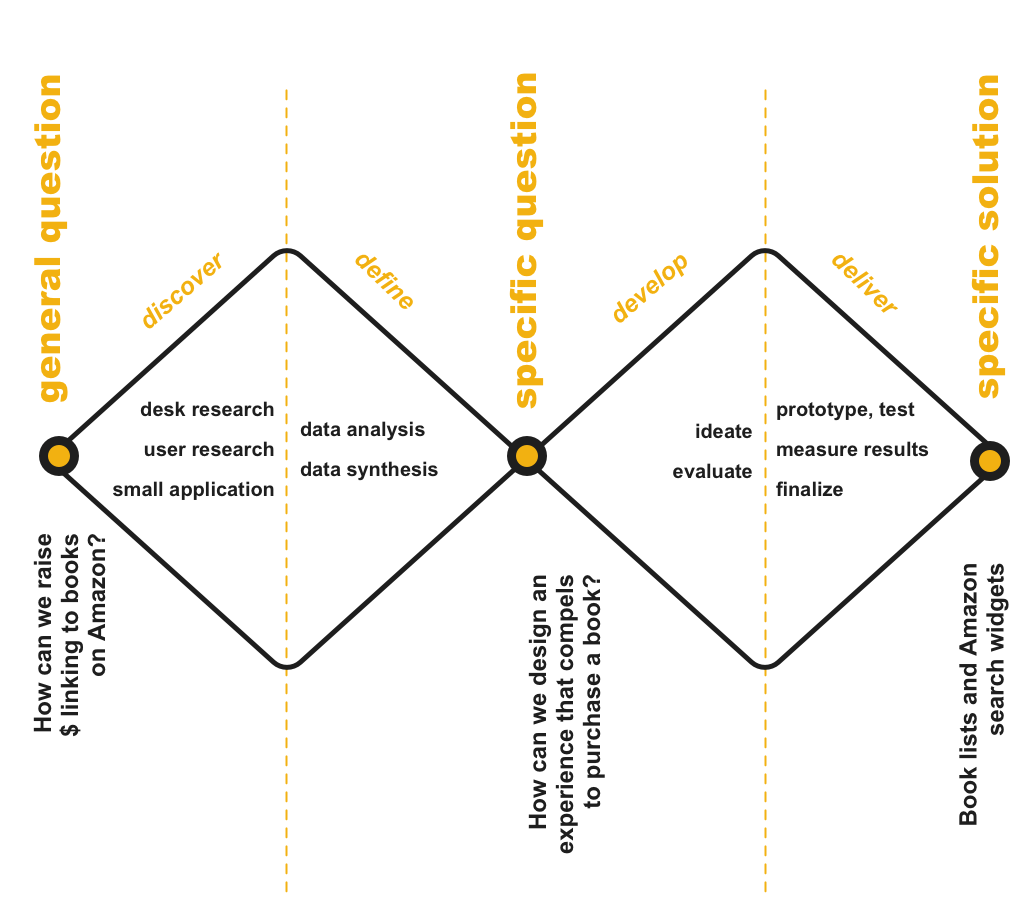[This blog post is written by BizLab Fellow Cynthia Yue, introducing her Summer 2018 experiment, focused on affiliate marketing and book purchases.]
WBUR has participated in Amazon’s affiliate program since 2002. This program pays organizations a portion of the revenue earned from any consumers an organization directs to Amazon. What this means for WBUR is that anytime someone makes a purchase on Amazon, after clicking on a link from WBUR.org, a percentage of their subsequent Amazon purchases is passed back to WBUR, providing valuable financial support our programming.
Because books are often discussed on WBUR’s programs, we have rich book-related content on our website that can be associated with Amazon’s affiliate marketing program. For a variety of reasons such as website redesigns and staff changes, our affiliate marketing revenue has gradually decreased over the years.
Aligned to BizLab’s mission of experimenting with new ways to raise money for public radio, I wanted to tackle the domain of affiliate marketing with a fresh perspective. Our first central question is: can we design a book-finding experience for WBUR listeners that compels listeners to find and then purchase books, to the level that will generate significant revenue for the station?
In this post, I will walk you through the human centered design process that I used to answer this question. This process is composed of four stages: discover, define, develop and deliver. This is Part 1 of a two-part post.
The Process
Our design process follows the double diamond method, which starts by asking a general question relating to the problem I am trying to solve for. This is followed by a path of divergence and convergence as I examine the general question and narrow down into a more specific question. After establishing a specific question, I diverge again as I start examining possible solutions. I proceed with a cycle of refinement by designing, prototyping, user testing which leads us to narrow down our possibilities as I come closer to a specific solution.
Discover
To start, I gathered data from multiple sources to gain a better understanding the general question: how can we raise money for WBUR by using affiliate links to books on Amazon?
The main goal here was to glean insights from existing data from within WBUR, and to start collecting additional data required to fill in the gaps.
Desk Research I conducted an evaluation of existing and similar book related pages from libraries, popular publishers, social media platforms, book ecommerce products and products cited in our survey responses. I also examined WBUR’s web traffic using Google Analytics and evaluated historical affiliate activity in our Amazon Associates account.
User Research We ran a survey, using SurveyMonkey, to better understand how our audiences consume books.
Small Application WBUR already links to books on Amazon quite frequently. To start measuring potential results, I immediately worked with multiple departments within WBUR to ensure that Amazon links are properly tagged moving forward.
Define
In this phase, I start narrowing down our question by analyzing and synthesizing all of our data from the previous phase.
Data Analysis
A majority of wbur.org’s users enter through specific articles. This is split between non-show articles and articles associated with shows. Non-show articles include WBUR News, The Artery, Cognoscenti, Common Health, etc. Show articles include all articles affiliated with Here & Now, On Point, Modern Love, etc. Knowing how people arrive on our site informs where we should be promoting our book links to get maximum exposure.
Examination of our Amazon Associates revenue reveals a rapid decline in revenue. This occurs for several reasons that I won’t get into, but it shows potential for this experiment, which is exciting!
| Web Traffic | Amazon Affiliate Revenue |
|---|---|
 |
 |
Survey Results from Key Findings
Below I’m highlighting the key findings revealed by our survey, which received 208 responses.
Sources for book recommendations
I was happy to see that half of respondents get book recommendation from the radio. In connecting the top 2 resources for finding books, friends and bookstores, I immediately start getting ideas. It is worth mentioning here that prior research conducted by BizLab found that our loyal listeners considers WBUR to be like a friend. So…what if we craft an experience that replicates the feeling of being in a bookstore while evoking the feeling that WBUR, a friend, is recommending certain books to read?
| ~50% take book recommendations from radio | #1 resource for book recommendation: friends |
#2 resource for book recommendation: browsing bookstores |
|---|---|---|
 |
 |
Common behaviors
Many of our responses cited NYT and NPR Books as reliable resources of book recommendations. Neither NYT nor NPR Books accommodate all of the notable behaviors listed below. So…what if WBUR addresses these behaviors by including a function to add books to a “to-read” list, while presenting relevant information so that our users no longer need to diverge upon multiple journeys before deciding to purchase a book?
| Keeping “to-read” Lists | Referring to NYTs and NPR Books | Consulting multiple sources before committing to read a book |
|---|---|---|
 |
 
|
 |
| Wants to learn more about the author |
Reads 2-3 reviews from other readers |
|---|---|
 |
 |
Specific Question
With this insight, we were able to focus down to a more specific question:
How can we design an experience that compels users to purchase a book?
Develop
To develop a solution, I began with brainstorming and sketching. As I moved to higher fidelity protoypes, I got feedback from users each step of the way.
Ideation
Book articles
To make the book more prominent and recognizable, I added more generic book covers to existing book related articles on the site.
| Before | After |
|---|---|
 |
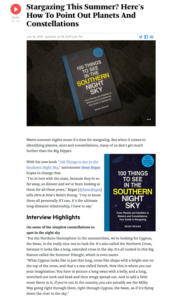 |
Book lists
I also added more book covers to our On Point summer reading list. Book covers are lined up row by row, with the name of the person recommending the books displayed in bold font. This attempts to replicate the experience of going into a local bookstore.
| Before | After |
|---|---|
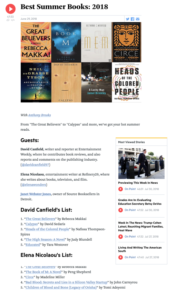 |
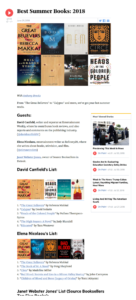 |
Lastly, I started building a new page entirely dedicated to books. This accommodates common book reading behavior revealed in our survey.
 |
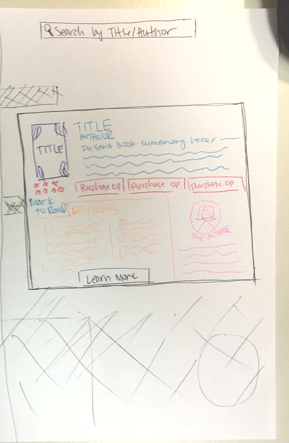 |
 |
Deliver
In the Deliver phase I start iterating upon our initial design through a cycle of rapid prototyping and testing. I went through four design iterations to create a functional, testable prototype.
Design 1
These were mockups created using Sketch. This design offers information on the author, ratings/reviews and a book summary. I presented this to BizLab’s internal team of advisors, whose main concerns were that it didn’t provide much added value from what already existed on Goodreads and Amazon. A user can easily do a Google search to learn more about the author; what value is WBUR adding for book readers? These were valid concerns.
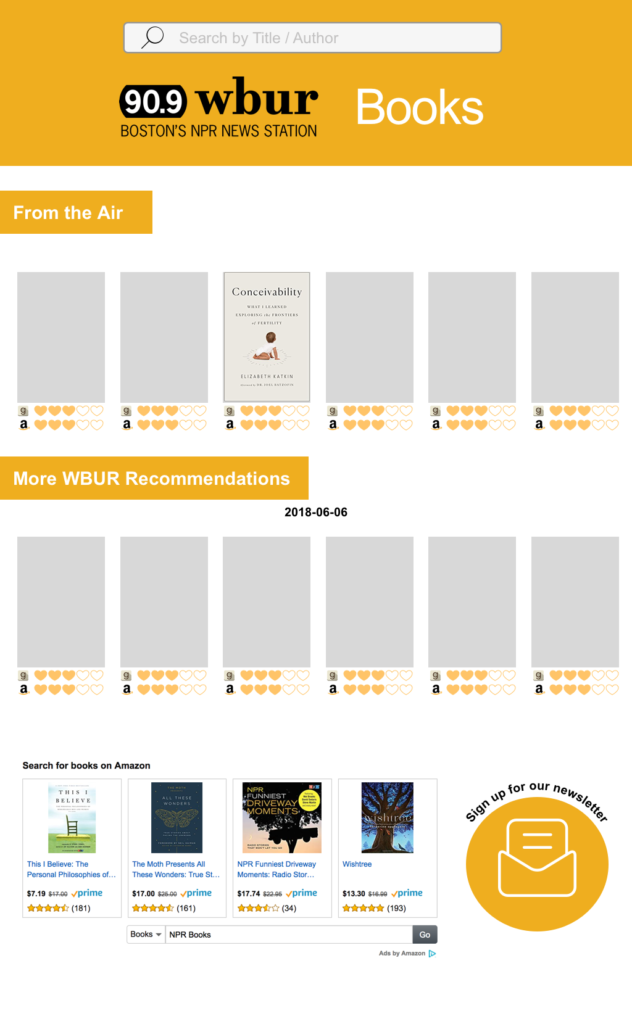 |
 |
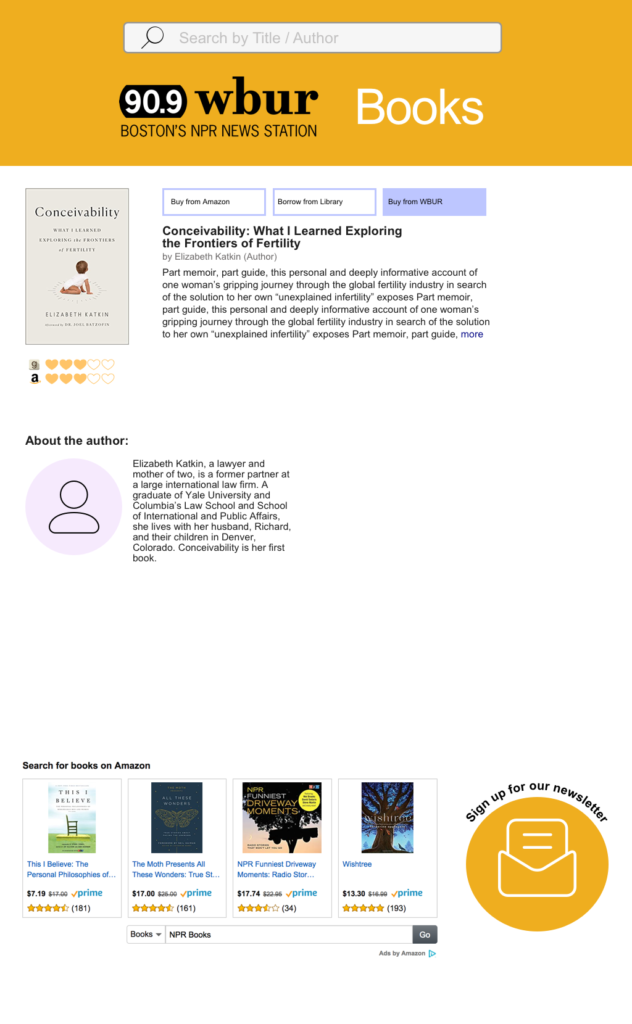 |
Designs 2 and 3
I started with another approach and built two medium-fidelity prototypes using InVision. Rather than just having WBUR branding, I placed more emphasis on specific hosts and shows, tying back into the finding of book recommendations from friends holding the most value; this adds a face to the recommendations. These prototypes also present more WBUR specific content. Additionally, I wanted to explore the idea of having an Amazon search widget along with messaging that states: “When you buy a book through the provided Amazon links, a portion of the proceeds goes to help fund WBUR”.
 |
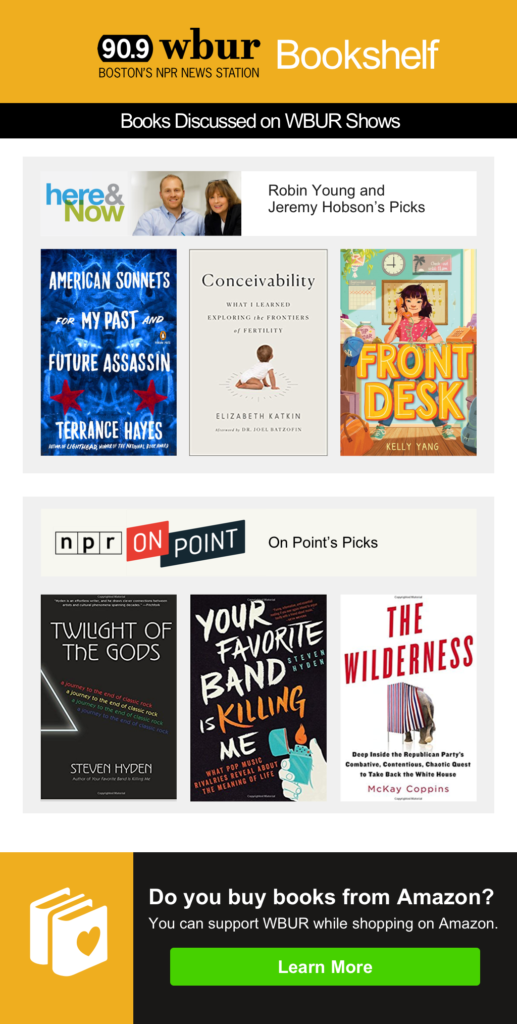 |
These prototypes were user tested with WBUR listeners and book lovers — people who had previously participated in our survey. The key takeaways from these design reviews were:
- Users wanted to see more faces associated with books
- Users have a strong preference for shopping for books locally
- Users felt better about buying books from Amazon knowing their purchases would benefit WBUR
- Users liked having the option to play audio
This feedback I collected was extremely helpful in informing the next iteration.
Design 4
A high fidelity prototype built with HTML and CSS. I launched this on our BizLab site and started directing traffic to it using banner and social media ads. I’m currently comparing the performance of this page with the book articles and book lists that were modified in the ideation phase. You can visit the bookshelf here: https://publicradiobizlab.org/bookshelf_page/bookshelf.html
| Desktop | Tablet | Mobile |
|---|---|---|
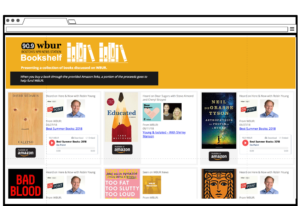 |
 |
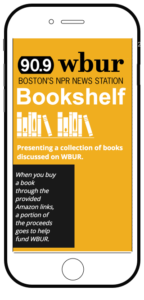 |


